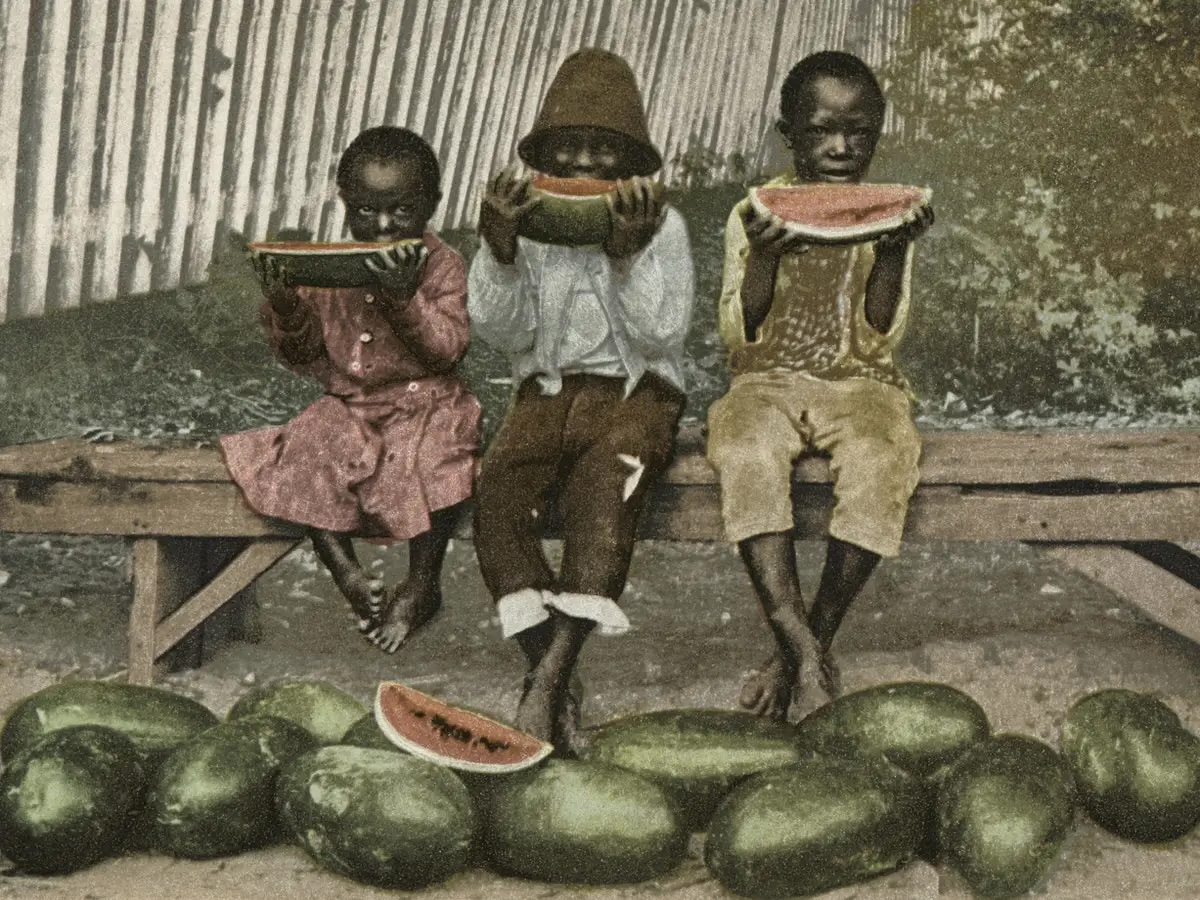The topic that I want to discuss is the aspects in which watermelon—a common fruit that is beloved by many—continues to be a form in which Black people are put down. I wanted to understand further the history and the hate in which it resembles today. It may not be an overtly racist comment you hear, but the undertones and the history that backs it is incredibly discriminatory. It has become a constant reminder of the ways in which people are able to demean Black people with just one reference to watermelon. Watermelon represented liberty and freedom to Black people as it was one of the few crops they were allowed to plant during the 1700s. It has since then become a vice to mock Black people.
Why does a fruit have the ability to generate so much hate? The historic racism is the reason that watermelon is an inhibitor to perpetuate racist ideals. By creating an image of lazy and incompetent people. It became easier to hate and to justify violence and ridicule towards them. This hate had been built up from the transatlantic slave trade and the notion that white people were better than black people. Every aspect of their life was legislated or told to them by white people. They were unable to get the freedom they deserved without people reverting their image to ones of slavery.
After the Civil War, when slavery became illegal, many white people who would originally own slaves were furious, as well as those who were poor. They had ridden on the notion that even if they were not rich or accepted in society, they were always better than Black people. As soon as Black people were able to own land, the fury that they were able to obtain something at all was a common feeling among white people. Their one thing that they could claim to be true that no matter what they were better than Black people had completely been shattered. White people saw that as a threat and an infiltration of the society that they had created. The ways in which they combatted this was by verbally and physically hurting African-Americans. This included reminding them of where they were in slavery and below whites. These tactics included using their victories of watermelon as a tool for mockery.
It is sad to see that this is not an uncommon occurrence to see in present day. There are still many jokes that are made towards Black people about watermelon and the obsessive fascination with it. There are quips and subtle remarks about it constantly. Racism is not limited to redlining or visible discrimination. It can also appear in subtle comments that keep being perpetuated. Times have changed and people are more quick and able to voice when they see these racist comments in the media. But there are still these microaggressions that are so hard to pick up and for others to understand because they don’t understand the historical context and the hurtful manner in which it has had for many years to Black communities. These microaggressions, when not understood, can make it look like Black people are overexaggerating or always angry, which perpetuates a stereotype of its own. It is almost impossible to get around stereotypes because they are so ingrained into the society that this nation was built on.
The sources in which I picked were mainly website articles. The ways in which I obtained them were both through the library catalog as well as the Internet, searching myself. I looked at the Jim Crow Museum page in which they had an article that was a response to a comment. The comment was questioning us why a simple fruit has become the butt of many jokes as it pertains to Black people. I also was looking at articles from the Atlantic and from this article website called Medium. Through the Wooster catalog, I was able to check out a book titled The Fruits of an Empire which had a chapter on watermelon and the racist history of it. Although those articles were specifically geared towards the racism of watermelon, I also looked at sources in which had facts and history of watermelon itself as a fruit. I learned about how it is commonly used in arid climates to hydrate a person. It was an easy, fast-growing crop that came to the Americas through the transatlantic trading system. Not only did I get a narrow view on my topic, I was also able to get a broader sense of the fruit itself, and I would like to implement it to show the greater context of watermelon outside of its racially dividing characteristics that were later implemented by social ideology..
Sources
Wiltz, Allison. “How watermelon Became a Powerful Symbol of Racism, But Also Resistance.” Medium. 10 November 2023, https://allyfromnola.medium.com/how-watermelon-became-a-powerful-symbol-of-racism-but-also-resistance-e898203e9011
Trinklein, David. “Watermelon: A Brief History.” Integrated Pest Management—University of Missouri. July 17, 2020, https://ipm.missouri.edu/MEG/2020/7/watermelon-DT/
Strauss, Mark. “The 5,000-Year Secret History of the Watermelon.” National Geographic. August 21,2015, https://www.nationalgeographic.com/history/article/150821-watermelon-fruit-history-agriculture
Klein, Shana. “Cutting Away the Rind” The Fruits of Empire: Art, Food, And the Politics of Race in the Age of American Expansion, edited by Darra Goldstein, Ahmanson & Murphy Imprint in Fine Arts, 2020, pp. 73-104.
Pilgram, David. “Blacks and Watermelons.” Jim Crow Museum. May 2008, https://jimcrowmuseum.ferris.edu/question/2008/may.htm
